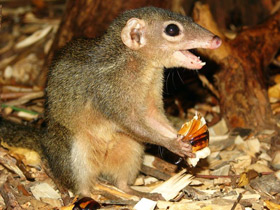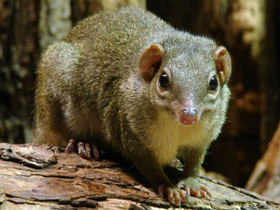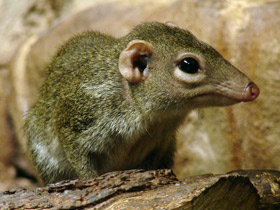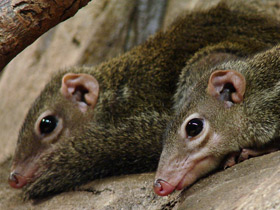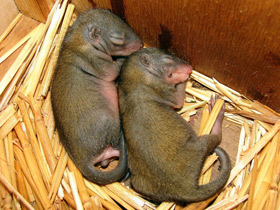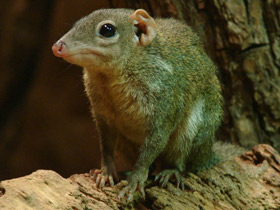The northern treeshrew (Tupaia belangeri)
The northern treeshrew (Tupaia belangeri) is a treeshrew species native to Southeast Asia.
In 1841, the German zoologist Johann Andreas Wagner first used the specific name Cladobates belangeri for treeshrews that had been collected in Pegu during a French expedition to Southeast Asia. These specimens were described by Isidore Geoffroy Saint-Hilaire in 1834 in whose opinion they did not differ sufficiently from Tupaia tana to assign a specific rank.
Description
Tupaia belangeri is a squirrel-sized animal found in the deciduous tropical forests of southeast Asia, particularly Thailand, Indonesia, Sumatra, and Java. The body length of this animal varies from 12.5 to 18 cm, with almost the same length for the tail; weight - from 100 to 160 g. The fur of Tupaia belangeri is dense, dark brown on the back and sides, and orange-red on the abdomen. Its paws are equipped with sharp claws used for climbing trees, its ears are medium-sized, and its large black eyes, unlike other small mammals, are located on the sides of its head. The species epithet is given to this tupaia in honour of the French botanist Charles Paule Bélanger (1805-1881).
Behaviour and feeding
Not only in appearance, but also in its behaviour, Tupaia belangeri is similar to the European squirrel. It too spends most of its time scurrying around in the forest floor, searching for food, and hides in the trees when it is in danger and at night. Tupaia belangeri spends a lot of time searching for food. The diet of this omnivorous animal includes fruits, leaves, seeds, as well as various invertebrates (insects, spiders, worms and molluscs) and small vertebrates. After finding something edible, Tupaia belangeri sits on its hind legs, clutches the food with its front legs, and eats it rather quickly and vigorously.
Reproduction and social behaviour
Tupaia belangeri usually form monogamous pairs, but in Singapore there have been cases of a male mating with several females. Reproduction occurs year-round with a peak between February and June. Pregnancy lasts from 40 to 55 days, after which the female brings up to 3 cubs weighing no more than 10-12 grams each. The parents build a separate nest for them under roots or in tree hollows, lining it with dry leaves. The parents themselves live in a separate nest.
It is surprising that during the entire infancy, which lasts about 36 days in Tupaia belangeri, the female spends no more than one and a half hours with her cubs. She visits them once every two days for 10-15 minutes to feed them. After a month after birth, the young Tupaia belangeri leave their nest and join their parents. At the same time, the female stops feeding them milk. The young reach sexual maturity at the age of three months. The life span of Tupaia belangeri is about 10 years.

















